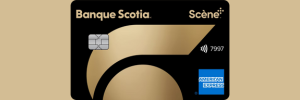
If you’ve just sold your trailer, won the lottery or robbed a bank, you should probably invest some of your earnings in the stock market. Heck, even if you have only $1000, you should think about investing your dollars. And if you want to put your money to work without it ending up lining the pockets of industry professionals, you should educate yourself well. Here is the beginner’s reading list to get you started at investing in the stock market all by yourself.
1) Investing for Dummies, Eric Tyson, First Editions
It’s the natural starting point on your learner’s journey. This book presents the three main options available on the market: learning how to invest in securities (stocks, obligations, ETFs, etc.), real estate, and how to become an entrepreneur. Like all “For Dummies” books, the short chapters spare you from feeling like an actual dummy – in fact they build your confidence. It’s a good overview of the entire industry with helpful reminders sprinkled throughout, which are a necessity when you’re starting what feels like an uphill battle. It’s up to you to choose the path that suits you most. Hint: it’s the one that looks the most like you!
2) How Buffett Does It: 24 Simple Investing Strategies from the World's Greatest Value Investor, James Pardoe, Maxima Éditeur
There are a hundreds books out there about the “most successful investors of all time”. But few of them are as concise or precise as this one. No boring repeats on safety margins, no frivolous details about Buffett’s ukulele, no endless diatribes about his insights. The book summarizes his philosophy in 24 simple advice statements such as “buy companies, not stocks” and “stay in your area of expertise”. Each one of these advice statements is further elaborated and explained in a few pages. For fans, it’s a good summary. For novices, a good introduction. And for logical people, it’s pure candy. We bet that Buffett himself, who loves transparency as much as he loves money, would thoroughly approve. And speaking of Buffet, his former daughter-in-law, Mary Buffett wrote a different book about him with coauthor David Clark: Warren Buffett and the Interpretation of Financial Statements. If you’ve never peeked at a balance sheet, or if you have and immediately regretted it, this book the magic ingredient to help you understand it. But I warn you, it’s still as painful as root canal.
3) The Visual Investor: How to Spot Market Trends, John J. Murphy, Valor Éditions
Although it’s far from a page-turner, the fact remains that this book is the best condensed version of what you should know about technical analysis. Importantly, it’s the only book on this list that addresses the topic. Whether these tools are useful in practice, it is relevant to know what trend lines, moving average, double top or oscillator are. And not just for impressing your dinner guests! A good number of people who are long-term' investors use these tools to determine the best and worst moments to sell their stock. It’s an incredible work of simplification – all under 250 pages. So what if Valor Editions doesn’t exactly give away their books? The book itself is worth your investment.
4) The Complete Turtle Trader, Michael W. Covel, Harper Editor
For those of us who have ever threaded a K-way, played Simon says or wore too much spandex, you will remember the film Trading Places (1983) in which two finance magnates make a bet about whether any average joe can win if they are put into winning conditions. So too goes the story of the Complete Turtle Trader. It’s about the fascinating experiment done by William Eckhardt and Richard Dennis, two talented traders who wanted to see if they could make millionaires out of complete nobodies. And so, in a few days and without the wave of a magic wand, emerges the namesake of the book: “Can we raise traders just like we raise turtles?”. It’s hard not to feel sympathetic for the turtles, since they are also pure amateurs who are only dipping their toes in finances for the first time. Needless to say, it reads like a novel. And it would be even more so, if it wasn’t for the 30 pages in the heart of the book where they explain the exact trading techniques that the turtles were taught. It’s at once entertaining and a great way to learn that “trader” and “investor” are completely different roles.
5) The hour between dog and wolf, John Coates, Vintage Canada Edition
Even if they forget it too often, all investors and traders are categorical : the stock market is not a game of numbers, it’s a game of emotions. Winners are made from those who can control their emotions, losers are those who get too carried away with fear and greed. Thus it’s not surprising that Coates’ book ends up on the list of must-read books for beginners. Retired trader-turned-neuroscientist, Coates explains how our bodies and brains interact, and how they react when the stock market booms or busts. Better understanding how your body works will help you be more under control, and thus invest with more success. It’s a gem that helps you not make a blunder by buying when it’s too expensive (when there’s too much testosterone in the body), or selling when it’s too low (too much cortisol). It will also encourage you to stay active and to take cold showers to perform better on the stock market (they are proven strategies for success!).
So, happy reading… and happy investing!
If you liked this article, you’ll definitely like Hardbacon’s mobile app, which links to your banking and investing accounts, helps you plan your financial goals, budget, and invest better. The basic version of the app is free, but you can do more with Hardbacon Premium. As a loyal reader of our blog, you can get 10% off any Hardbacon Premium subscription. To take advantage of this promotion, use promo code BLOG10 when subscribing through our website.
Translated by Ceilidh Barlow Cash























About The Author: Stephane Gagnon, guest writer
Conceived during the 1974 summer Olympic games, Stephane Gagnon is a Literature professor at CEGEP who has the misfortune of being interested in almost everything. His latest endeavor: the stock market. Unsatisfied with the way the “professionals” were managing his savings, he set about doing his own research, reading many books and eventually becoming an investor himself. For the better… and the even better!
More posts by Stephane Gagnon, guest writer